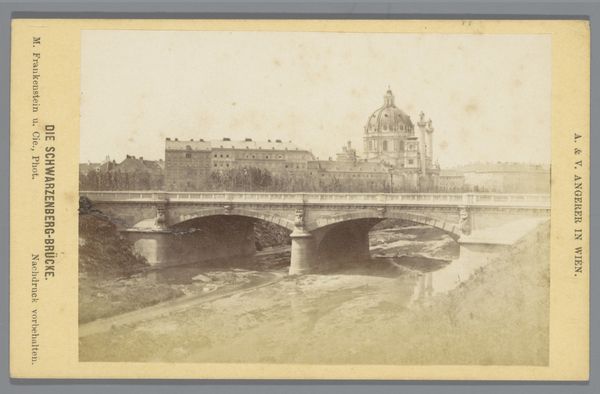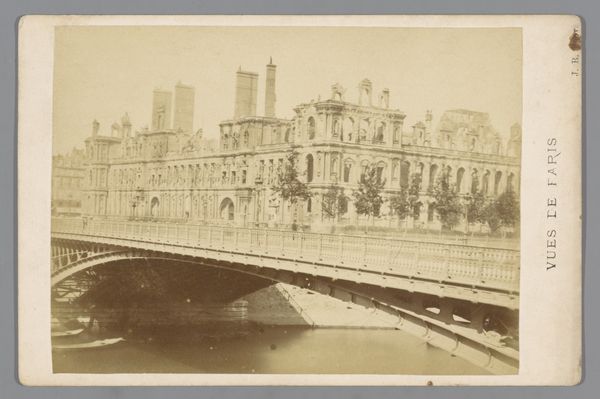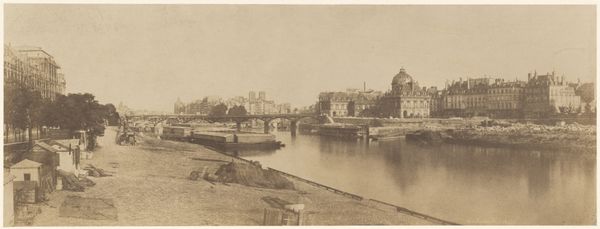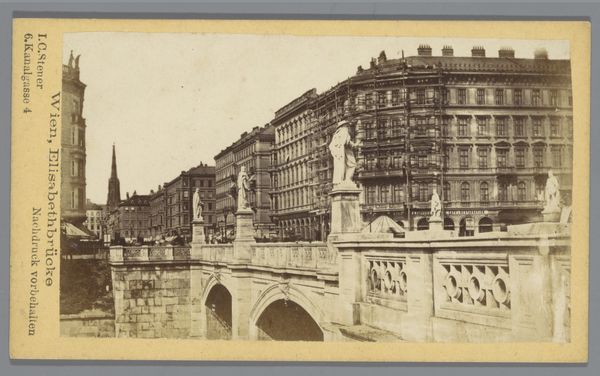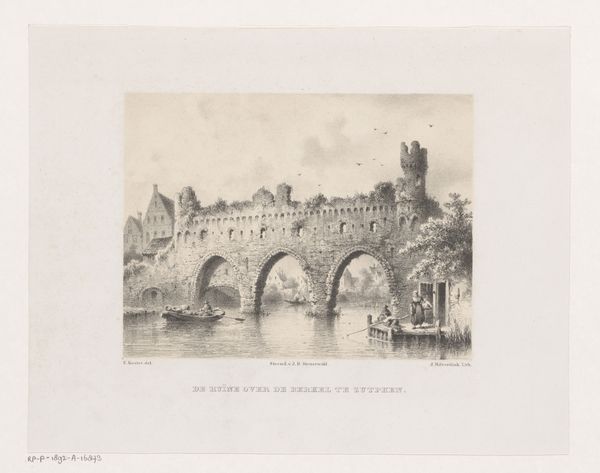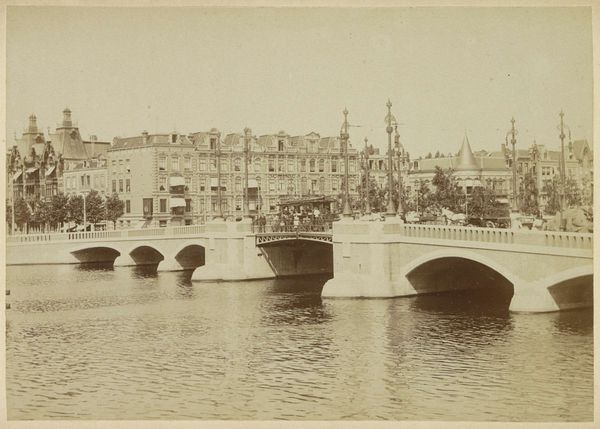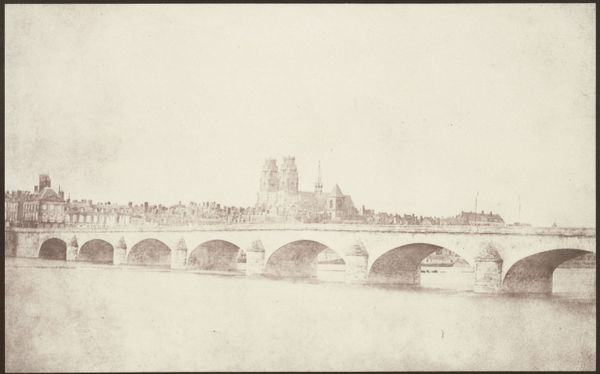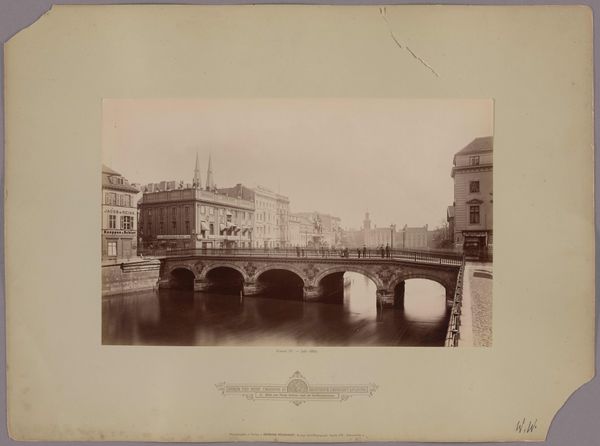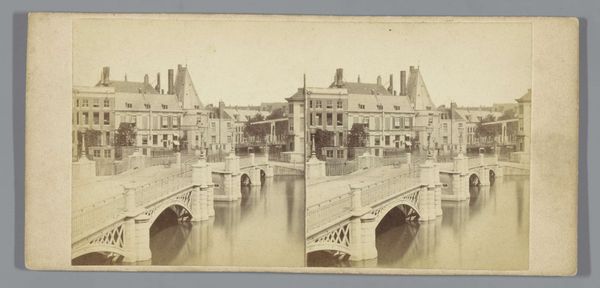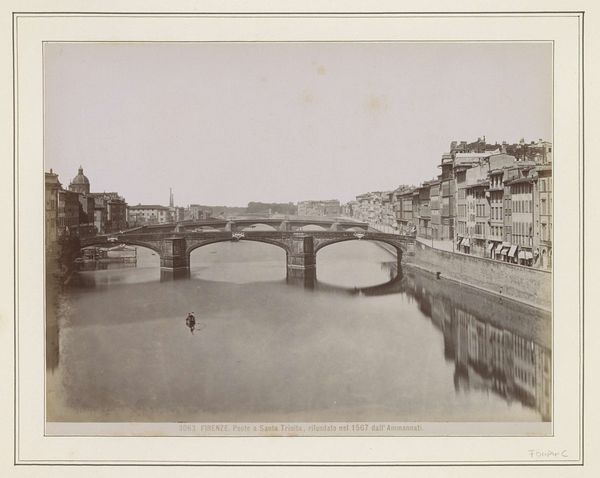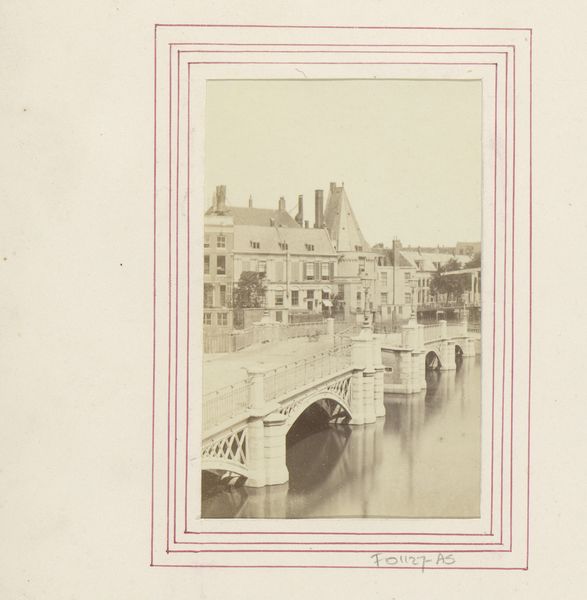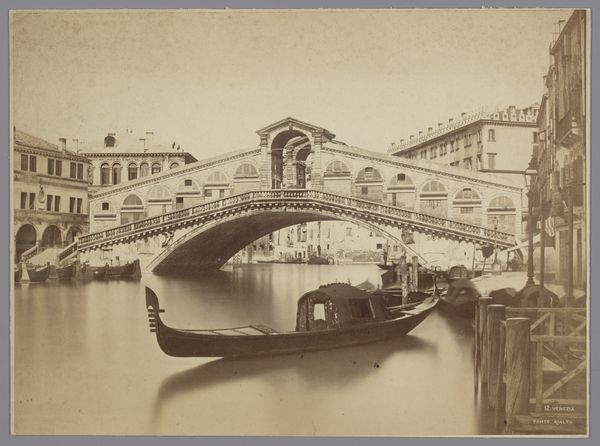
photography, gelatin-silver-print
#
photography
#
coloured pencil
#
gelatin-silver-print
#
19th century
#
cityscape
#
realism
Dimensions: height 107 mm, width 167 mm
Copyright: Rijks Museum: Open Domain
This photograph of the Amstel Hotel in Amsterdam was made by an anonymous photographer using an early photographic printing process. The image is printed on paper using a chemical coating containing light-sensitive silver salts. The tonal range is sepia, resulting from a chemical reaction during development, where silver particles form clusters that scatter light. The architecture embodies a very different kind of labour. The Amstel Hotel, opened in 1867, was built to an extravagant specification, using brick and stone for the bridge. The photographer, whose name is lost to history, also contributed to this economy. The chemical processes required to create the image, while groundbreaking at the time, relied on an invisible global infrastructure of extraction, refinement, and distribution. Consider how the camera captures both the physical and the social structures of its time. Recognizing the amount of work involved helps us see photography, like the hotel itself, as a product of immense material effort.
Comments
No comments
Be the first to comment and join the conversation on the ultimate creative platform.
